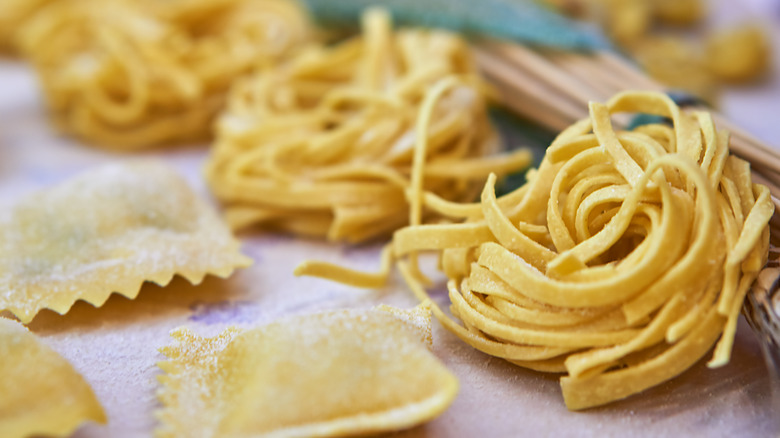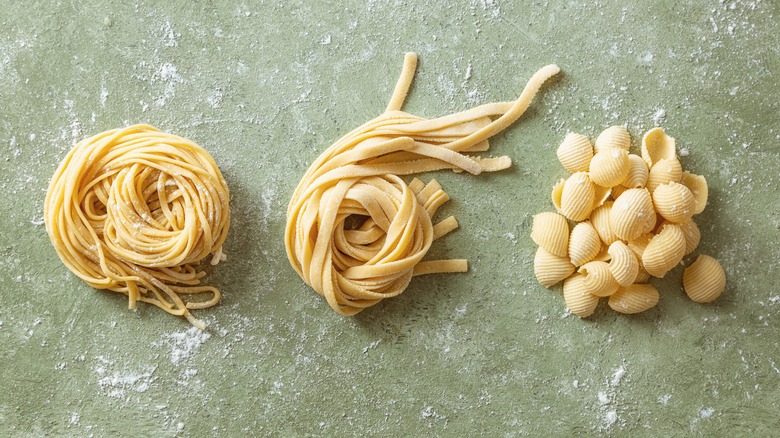Do You Have To Use Semolina For Fresh Pasta?
Making pasta from scratch is a straightforward process, but a laborious one, requiring time, patience, and skill. You might have noticed that some of your favorite grocery store dried pastas list semolina flour as their first ingredient, and wondered whether you need to use that type to make pasta at home. Food Republic spoke with Dominick DiBartolomeo, owner of The Cheese Store of Beverly Hills and Domenico's Foods, to get his thoughts.
"The choice of ingredients in pasta dough ... plays a role in texture and flavor," DiBartolomeo explained. "Pasta made with semolina flour has a noticeably coarser texture and a slightly nutty flavor compared to pasta made with other flours, such as all-purpose flour. The higher protein content in semolina promotes greater gluten development, resulting in a firmer, chewier bite."
For this reason, semolina flour is ideal for making "any pasta shape that needs to maintain its structure, especially thick or textured varieties like penne, rigatoni, orecchiette, fusilli, and other shapes commonly paired with hearty sauces." Semolina has a natural ability to hold its shaped, and, DiBartolomeo added, "This durability makes [it] ideal for achieving the perfect al dente texture" when cooking.
Ultimately, though, according to DiBartolomeo, "There's no definitive right or wrong choice — it all comes down to personal preference." So go ahead and use whatever flour you have on hand to make fresh pasta — just know that semolina works best for certain shapes.
Other types of flours, and what pastas they're best for
There are two other main types of flour you can use for homemade pasta, including what's known as 00 flour, named for how finely it is ground (compared to, for example, 1 flour). Thanks to its ultra-fine texture, 00 flour produces beautifully smooth pasta, perfect for traditional spaghetti, linguine, and tagliatelle. You can also use widely available unbleached all-purpose flour the same way you would 00 flour, especially if you're just starting out with pasta making — the results just might not be as refined as they would be with 00 flour.
With these flours, though, it's best to include eggs in the recipe. "Egg-based pasta is richer, velvety, and tender," said Dominick DiBartolomeo. While recipes with semolina flour (which typically don't call for eggs) might be the preferred choice for more robust shapes that can hold up to hearty sauces, an egg-based pasta works beautifully even with meaty Bolognese. "In Bologna, the classic choice is freshly made tagliatelle, typically prepared with egg, offering a tender, luxurious foundation for the sauce," DiBartolomeo explained.


